Since 2020 traveling by cars, campervans, or motorcycles has become an even more popular way of discovering the world than ever. Freedom, flexibility, and comfort are just a few of the advantages of car travel and it looks like many really appreciate them! From people going on regular holidays to digital nomads constantly on the move. In this post, we’ll cover everything you need to know about driving in Europe. We’ll share with you tips, requirements, and also some of our tales and insights from the road. Ready? Let’s hit the road!
Why are we even writing this post, you may ask? We’re digital nomads traveling across Europe in our car since 2021. During that time we traveled on the roads of many countries and discovered that driving in Europe isn’t as obvious as getting behind the wheel and just driving towards the sun. We were really surprised by some things and made both smaller and bigger mistakes along the way. So now we want to share our knowledge and experience with you to make your life easier.
Note. This post is for people who want to drive in Europe and it doesn’t really matter in what kind of vehicle or if it’s yours or rented. Most of the provided information and insights are valid for each case. In the case of rentals, you’ll actually have fewer things to handle on your own.

This website uses affiliate links thanks to which we may earn a commission for purchases you made at no additional cost to you. If you like the content, consider using those links to support us. Thank you!
Advantages of exploring Europe by car
Exploring Europe by car is a very exciting experience, regardless if you’re going on a long road trip or just driving your car on holiday. Unlike planes or public transport, traveling by car gives you freedom. Freedom to travel at your own pace, to stop wherever you want, to do detours. It allows us to see off-the-beaten-path destinations and hidden gems that are hard or even impossible to reach via public transport. And with all of that comes flexibility. Flexibility to adjust your day and your itinerary to your needs and whims.
Other advantages of exploring Europe by car include cost-effectiveness, convenience, and privacy. Costs of driving by car, like buying gas or potential repairs, can be much lower than train or airplane tickets, especially when traveling in a bigger group. You can also pack all the stuff you might need, without worrying about fitting everything into a backpack. Finally, traveling in your own car gives you privacy and comfort.
Exploring Europe by car can offer a unique and enriching travel experience, providing a level of freedom and discovery that is hard to match through other means of transport and it’s hard to argue with that.

What’s the best time for driving in Europe?
The best time for exploring and driving in Europe depends on your preferences and the regions you plan to visit. Weather varies throughout the countries in different months but in general, the late spring (May, June) and early fall (September, October) are considered best for road trips. Usually during these months, the weather is warm and pleasant, and the crowds are not as overwhelming as during the high season.
Summer months (July, August) are quite busy, with more tourists on the roads and in popular destinations. Also, temperatures might be burdensome in some regions. Winter months might be challenging, especially in northern parts of Europe or mountainous areas. Always research the specific regions you plan to visit and prepare yourself and your vehicle accordingly.
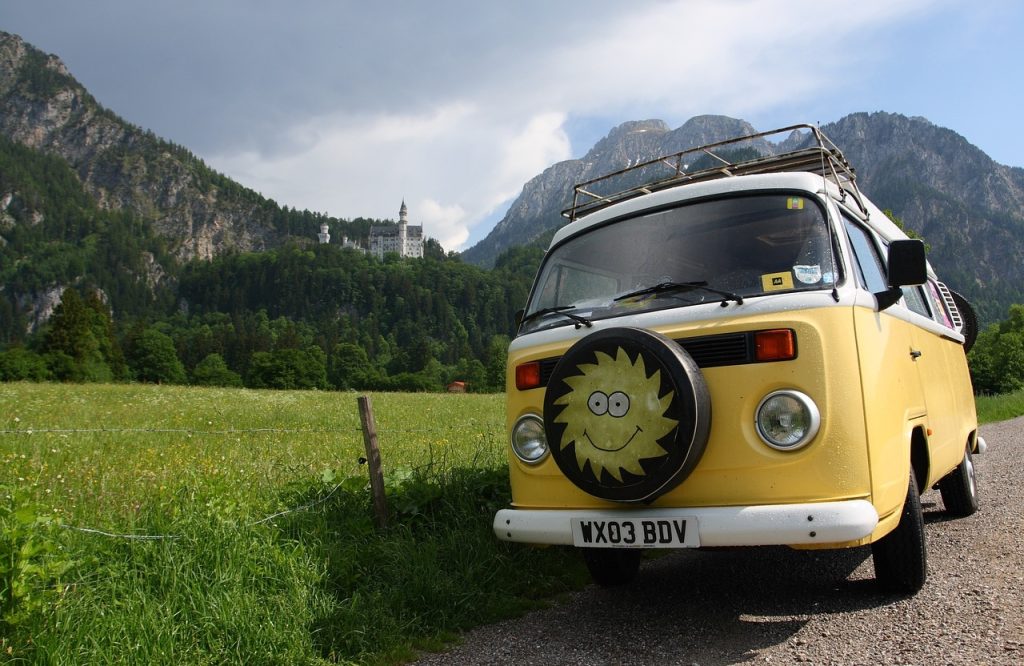
Driving in Europe with your own or a rented vehicle? What to choose?
Well… It depends. First of all, it depends on where you are coming from. If you’re from Europe you can easily travel in your own car wherever you want. But you can also choose to fly somewhere and then rent a vehicle suitable for your needs. You probably won’t take the car with you if you’re from ie. US, Australia and you’ll rent one. But it’s not impossible – we know some people who shipped their cars or campervans by sea to other continents and then traveled in them for several months or even years. It just depends on the specific use of the vehicle and what you’ll be comfortable with.
In general, both options have pros and cons to consider and in the end, it’s you who have to choose what will work best for you.
Renting a car in Europe
In some ways, renting is easier as you don’t really need to worry about anything. You choose your vehicle that is suitable for your current needs, you add car insurance to your bill and you’re good to hit the road. Also, in case of a one-way trip, renting might be more convenient as chances are high that you won’t need to drive back to the starting point and you’ll leave a vehicle at another drop point. Cons? Renting a car can be expensive and sometimes you have to meet various requirements (no offroad or unpaved roads for example) so always carefully read the rental agreement.
Before starting our digital nomad’s journey, we’ve always used Rental Cars to rent cars. We loved how easy choosing a perfect car was! We never had any problems with it, and definitely will use this website again in the future. And you can book your car now, for your next amazing trip!
Driving your own car in Europe
On the other hand, driving through Europe in your own car can save you money. It makes navigation in unfamiliar terrains more comfortable and less stressful as you know your car better. It can also give you more flexibility, as there are no daily kilometer limits and route limitations. Cons? You need to take good care of the car all by yourself – take it to the mechanic for inspection, to be sure it works well and to minimize the risk that it’ll let you down in the middle of the trip.
Additionally, you need to research various regulations and laws, like emissions stickers, or highway vignettes and payments or required equipment. Believe us, there are a number of various requirements different for each country that might surprise you! We probably don’t need to tell you that as that is obvious but just in case – you also need to buy car insurance.
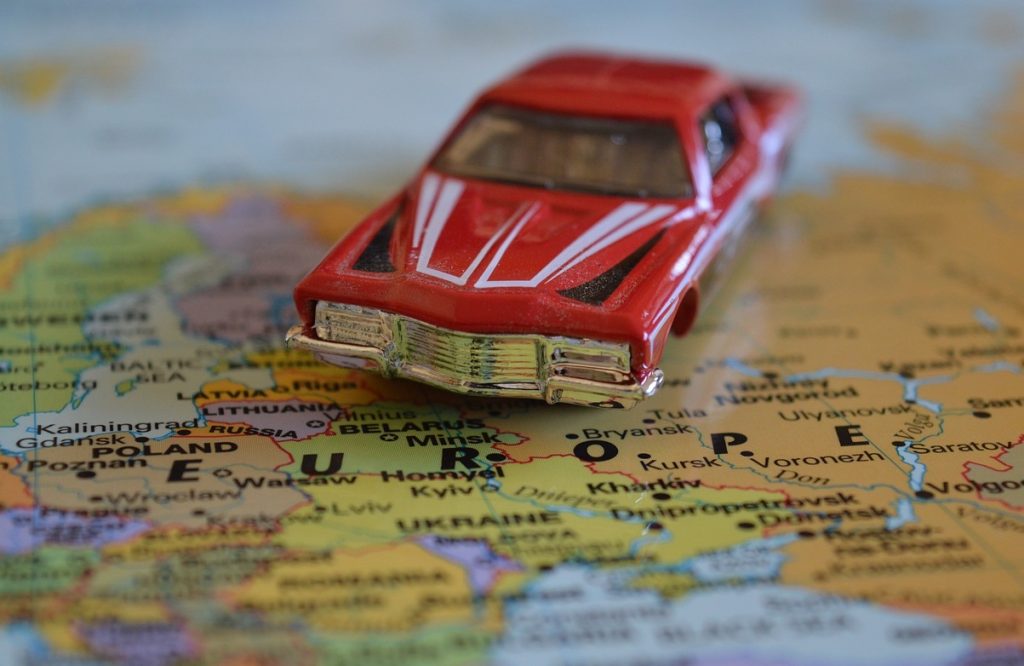
Would you like to become a digital nomad and travel slow? 👨💻🌍
Driving In Europe – Everything You Need To Know
Needed documents
You need to have with you a valid driving license, identity card, and proof of vehicle insurance.
International Driving Permit (IDP)
An International Driving Permit is a translation of a national driving license that allows its holder to drive a vehicle in any country that recognizes the document. If you’re a European Union citizen traveling to another EU member country – you don’t need it. But in case of traveling to non-EU European countries, you need to get an IDP. Non-Eu citizens must obtain an International Driving Permit in every case (except for UK citizens thanks to an agreement made between the UK and EU).
So if you need this document, remember to apply for it a few weeks before leaving the country. Also, IDP isn’t a replacement for your license but a supplement to be carried alongside. To check whether you need an International Driving Permit visit internationaldrivingpermit.org website.
Required car equipment
While driving in Europe you must be aware that required car equipment is slightly different in each country. In general, must-have items are reflective jackets, warning triangles, and a first-aid kit. You might also need a fire extinguisher, spare bulbs, anti-theft protection, a second triangle, or even a spare set of glasses. Please visit oponeo.co.uk to see the requirements of countries you’ll be traveling to and buy all the needed stuff.
In case of traveling in winter, in areas where it snows, you’ll also need snow tires and frequent snow chains.
If you’re traveling from/to the UK, don’t forget headlight converters if your car “has the wheel on the other side”.
Low Emission Zones
Low Emission Zones (LEZs) are designated areas usually within cities or urban centers where access is restricted or controlled for vehicles based on their emissions. Only vehicles that meet certain emission standards are allowed to enter these zones in an effort to reduce air pollution.
And as you might expect… Each country has different regulations. In some, you’ll have to buy a physical sticker or pay online to enter, while in others you won’t be able to enter during specific times of the week. Complicated! Please visit the urbanaccessregulations.eu website and get to know the requirements of the countries and cities you’ll be visiting.
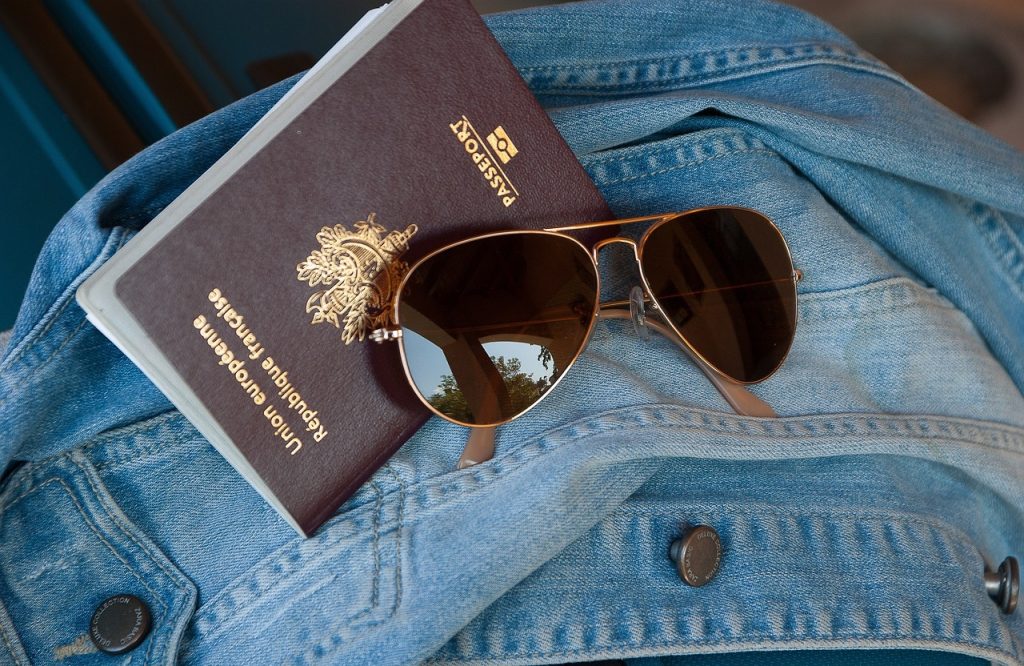
Country stickers
If you’re traveling to the EU from countries like the UK or Switzerland, or your car plates don’t include the EU symbol you’ll need to buy a country sticker (the country your car is registered to) too and stick it on the back of the car.
Highway payments
Another important thing you need to know about driving in Europe, which can easily give you a headache, is the highway payments. While in a few countries, like Germany or Belgium, you’ll be able to drive for free, in others, you’ll have to pay to use motorways. In some countries, like France, Spain, or Italy, you’ll find toll gates in which you’ll have to pay by cash or card – easy.
In others, like Austria, Switzerland, or the Czech Republic, you’ll need a vignette. Some countries accept online-bought vignettes, and some demand a physical one at your car window. For more information about various highway payments please visit tolls.eu website.
In our experience, Portugal has the weirdest and most complex toll system which varies across the country so beware!
Tip. In most toll gates you’ll be able to pay by card without any problems, but we advise you to keep some cash in case of non-existing/not working card terminals. We came across the “only-cash” method in one gate in Northern Italy and South Spain.
Apps and navigation
To make driving in Europe easier, be sure to have up-to-date navigation. You can use one that is part of your car, or download an app like Google Maps, Apple Maps or Maps.Me. For many years now we’ve been using Google Maps, and really love it. Especially the fact that we can download offline maps beforehand and we don’t need to use precious roaming data too much. So far it has never let us down.
Speed limits
What more can we say here than… If you care about others and don’t want to get a fine, always stick to a speed limit. Police and speed cameras might be waiting at every corner. Pay attention to the road signs and you should be good. Also, remember that in some countries speed limits change with weather conditions or hours during the day. Before leaving, check out speed limits throughout Europe on acl.lu website.
Parking color lines
When driving a car, you also have to stop sometimes, and it’s good to know where you can do that legally. The paint color used for lines creates defined spaces to control traffic and guide drivers. Colors might vary across the countries but it usually goes like that: white – free parking space, blue – paid-in parking meters and sometimes time restricted, yellow – commercial use only, don’t park there; green – for residents. As always, check the requirements for the country you’re going to as it may vary slightly.
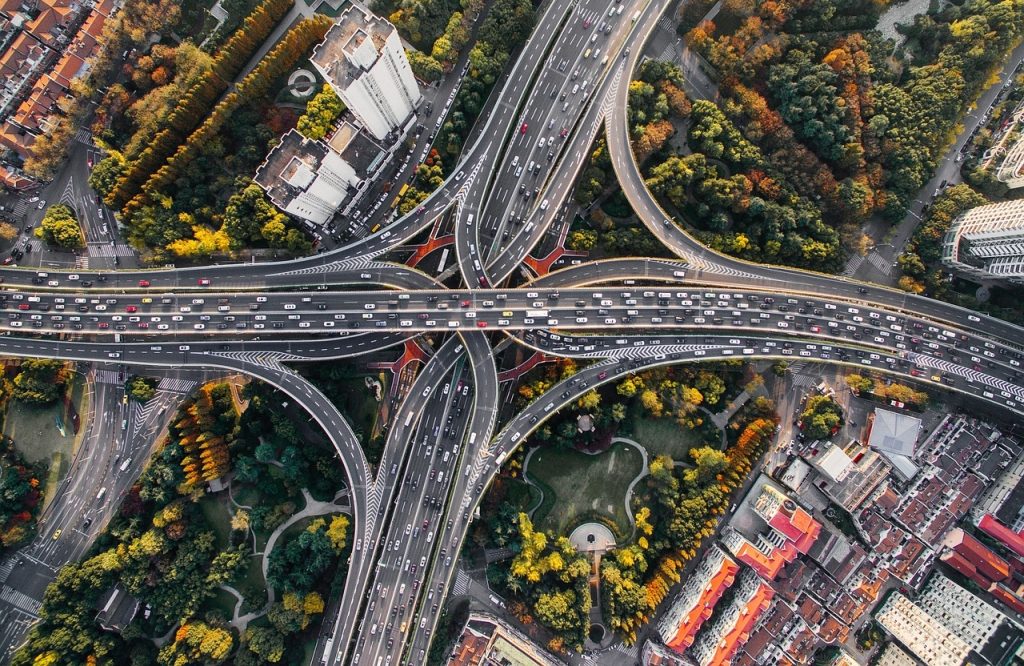
Crossing borders
In most countries within the Schengen Area crossing borders is painless. If not for welcome and speed limit signs, you would hardly notice that you’ve just crossed a border. From our experience, France is the country that has the highest level of security and we came across random border checks a few times but mainly for trucks, buses, or campers.
Green card
The green card is an international insurance certificate that allows you to prove that your car is insured. It isn’t necessary in EU countries as well as in Switzerland, Norway, Iceland, Andorra, and Liechtenstein. You’ll need to have a green card in Albania, Azerbaijan, Belarus, Iran, Israel, Macedonia, Morocco, Moldova, Montenegro, Russia, Serbia, Tunisia, Turkey and Ukraine. You can get it for free or for a small fee from your car insurance company.
Gas stations
In most of the gas stations in Europe, you’ll have to fuel a tank by yourself and then pay in the gas station store. There are also quite a lot of self-service stations, with a self-pay system you need to use BEFORE fueling. But here’s a catch! To use them, you need to have more money in your bank account, usually around €200. Have that in mind if you use debit cards and are running low with money as you may not be able to fill your car.
Also, be aware of for example Italian gas stations where you need to choose if you want to fill up a tank on your own (self-service lane) or if you’d like a staff to do it for you (serviced lane). Remember that you’ll pay more for serviced option!
Right or left side of the road
All countries in Europe except the United Kingdom, Malta, Cyprus, and Ireland drive on the right side of the road.
Alcohol driving limits
There are different alcohol driving limits in different European countries. The most common standard in Western Europe is 0.5‰, and 0-0.3‰ in Central and Eastern Europe. Our opinion on this? Don’t drink and drive, ever. To see alcohol driving limits around Europe visit etsc.eu website.
Emergency numbers
112 is a common European Emergency number. You can also write down all other emergency numbers you might find helpful in each visited country as they well… differ.
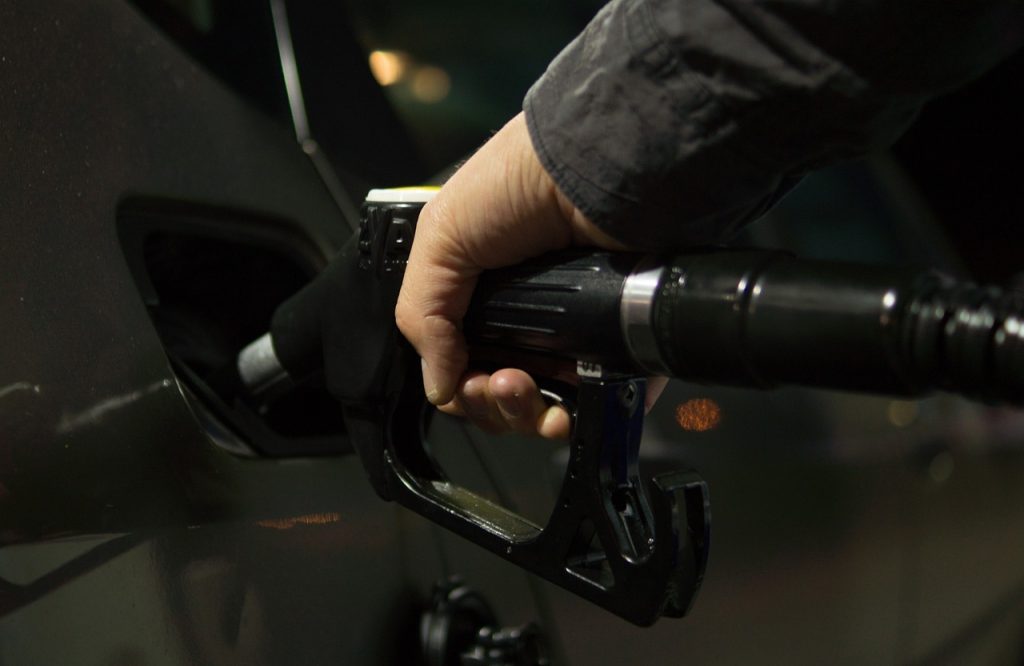
Other things about driving in Europe that might come in handy
People under 18 with a USA license can’t drive in Europe.
Create a digital copy of your driving license, ID card, and/or passport – could come in handy in case of robbery.
Don’t drive on the left lane on the highways unless you’re overtaking other cars.
Roundabouts are immensely popular in Europe. So if you’re not that experienced with them it’s good that you learn earlier how they work. But don’t worry! Most of them are not as scary as for example this one in Paris.
Prepare yourself for narrow roads and parking spots, especially in the older towns.
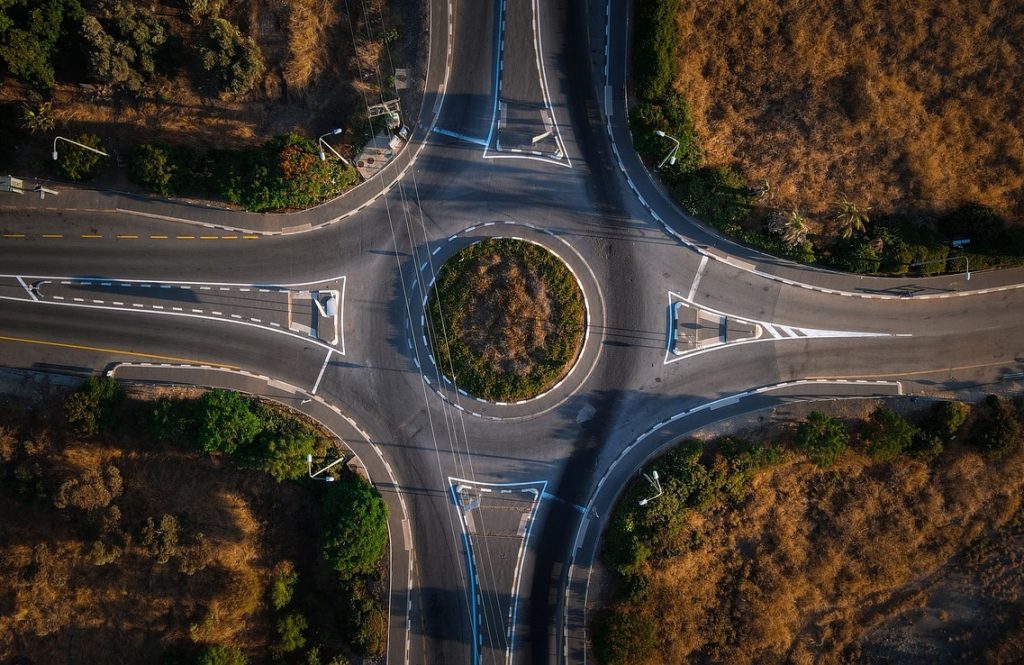
Insure yourself too!
One last thing about which you can’t forget before driving in Europe is buying travel insurance. We highly recommend buying good insurance as you never know when you’ll get sick or something bad will happen. Also, you probably won’t be happy with paying thousands of euros for hospitalization, treatments, etc. Insurance prices may vary a lot depending on your country and your needs. You can buy one via an insurance company in your country or take a look at WorldNomads or SafetyWing. Prices start from $45 per month.
If you’re from one of the EU countries (and insured in your residential country) you can also use a free EHIC card (European Health Insurance Card) to receive treatment in another member country for free or at a reduced cost (to be more specific – same as locals), if that treatment becomes necessary during your visit. But remember that EHIC doesn’t cover a lot of things.

Driving In Europe, everything you need to know – Summing up
Driving in Europe in your own or rented vehicle can be a truly amazing adventure. Navigating among stunning landscapes, taking breaks whenever you want to, visiting remote areas, not waiting for public transport, setting your own daily schedule… Doesn’t that sound amazing? Hopefully, now you can see that it isn’t as scary as it might seem. Sure, you need to take care of a few things, and remember about others but in our opinion, it’s totally worth it. We love driving in Europe and hope that you’ll love it too!
If you are already traveling around Europe by car, share your experience in the comments below. 🙂
Want to know more about slow traveling?
You may also be interested in these posts:- Retrospective On The Second Year Of Living As Digital Nomads
- How to work remotely and travel long-term?
- Best Well-Paid Remote Jobs For Digital Nomads
- Travel Slow Or Travel Fast - Which One Is Better?
- How To Prepare For Full Time Travel As A Digital Nomad?
- Retrospective On The First Year Of Living As Digital Nomads
- 20 Reasons Why You Should Experience Slow Travel
- Slow Travels With Remote Work: Challenges, Myths, Pros, Cons
- What Is Slow Travel? - 101 For Beginners












